Parity Data Dashboards
Accessing Polkadot Ecosystem Dashboards¶
The Parity Data Team has made publicly available a website that displays a number of dashboards relating to Polkadot Ecosystem On-Chain data. The graphs provided are grouped into the following sections:
- Stablecoins - metrics around stablecoins in Polkadot AssetHub.
- Treasury - metrics around treasuries in the ecosystem.
- Staking - metrics pertaining to staking, nomination pools and more.
- Ecosystem - high level activity metrics for relay chains and Parachains.
- Monthly Report - an updated version of the Polkadot in Numbers: Annual Report 2023.
Notes on How to Use the Interactive Charts¶
The Ecosystem Tab shows a number of universally applicable metrics (Active Accounts, Unique Accounts, Transactions, Events) across both Polkadot & Kusama Relay/Parachains. Users can select whether they want to view:
- Polkadot or Kusama
- Daily or monthly figures
- Substrate Only, EVM Only or Substrate + EVM numbers.
The default view is set to Polkadot,Monthly, Substrate + EVM.
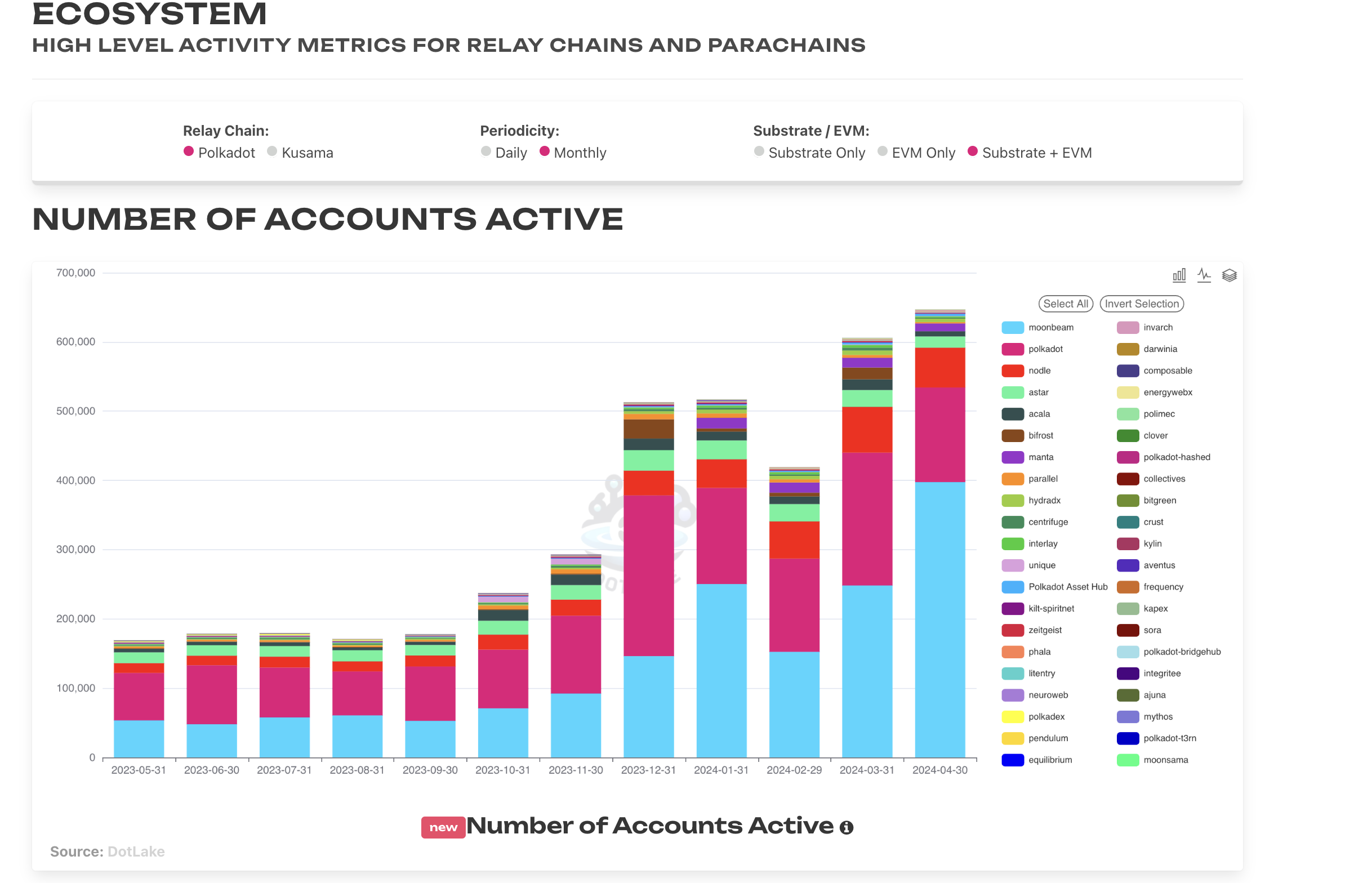
Here is an example of selecting Polkadot, Daily, Substrate Only for Transactions.
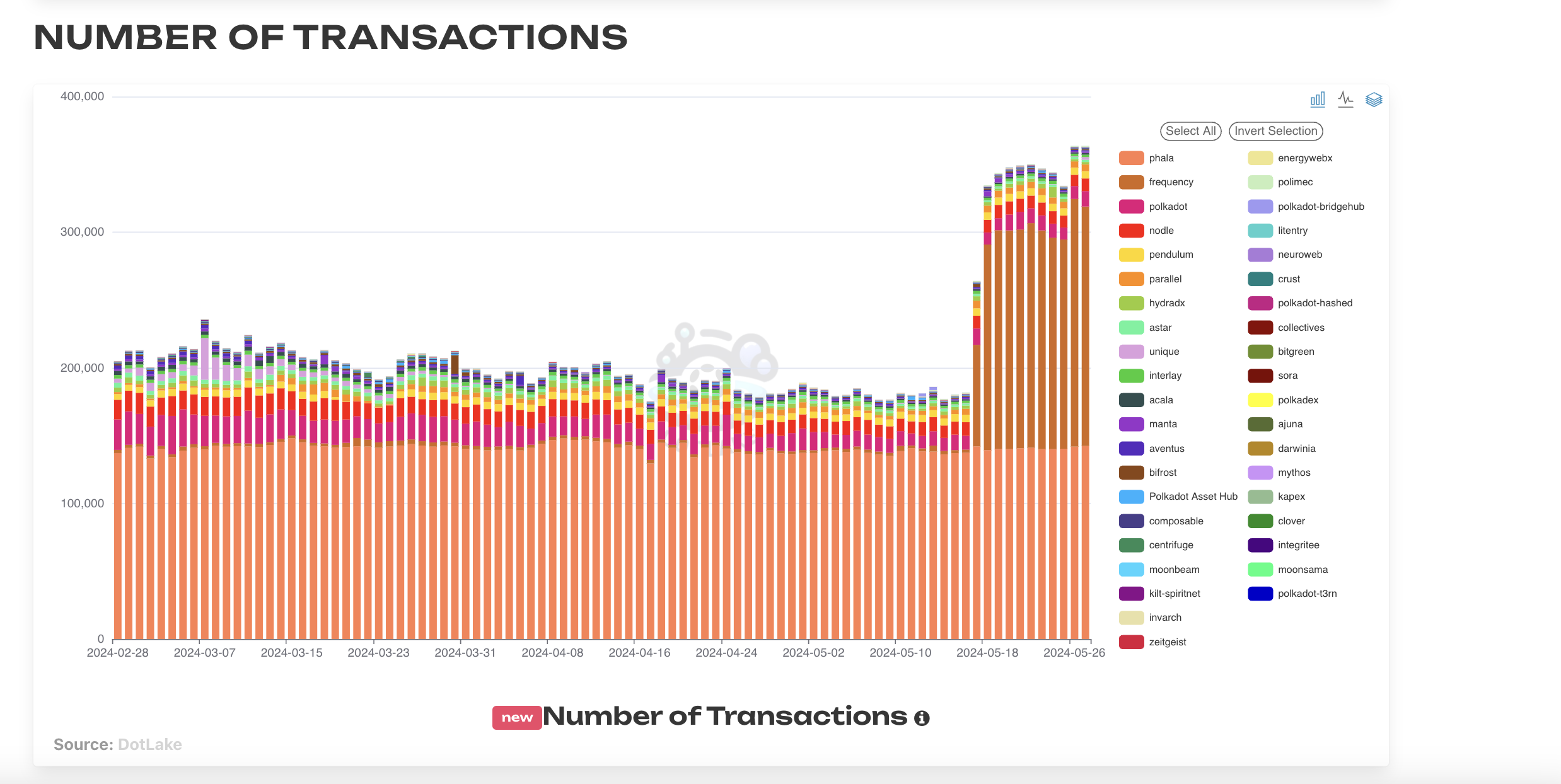
Users can also specify which chains they would like to view metrics for. The default view is set to the entire Relay & Parachain grouping. Below is an example of selecting data for only Polkadot Relay, Moonbeam and Nodle chains. Users can hit invert selection for convenience to de-select all options before selecting their desired chains.
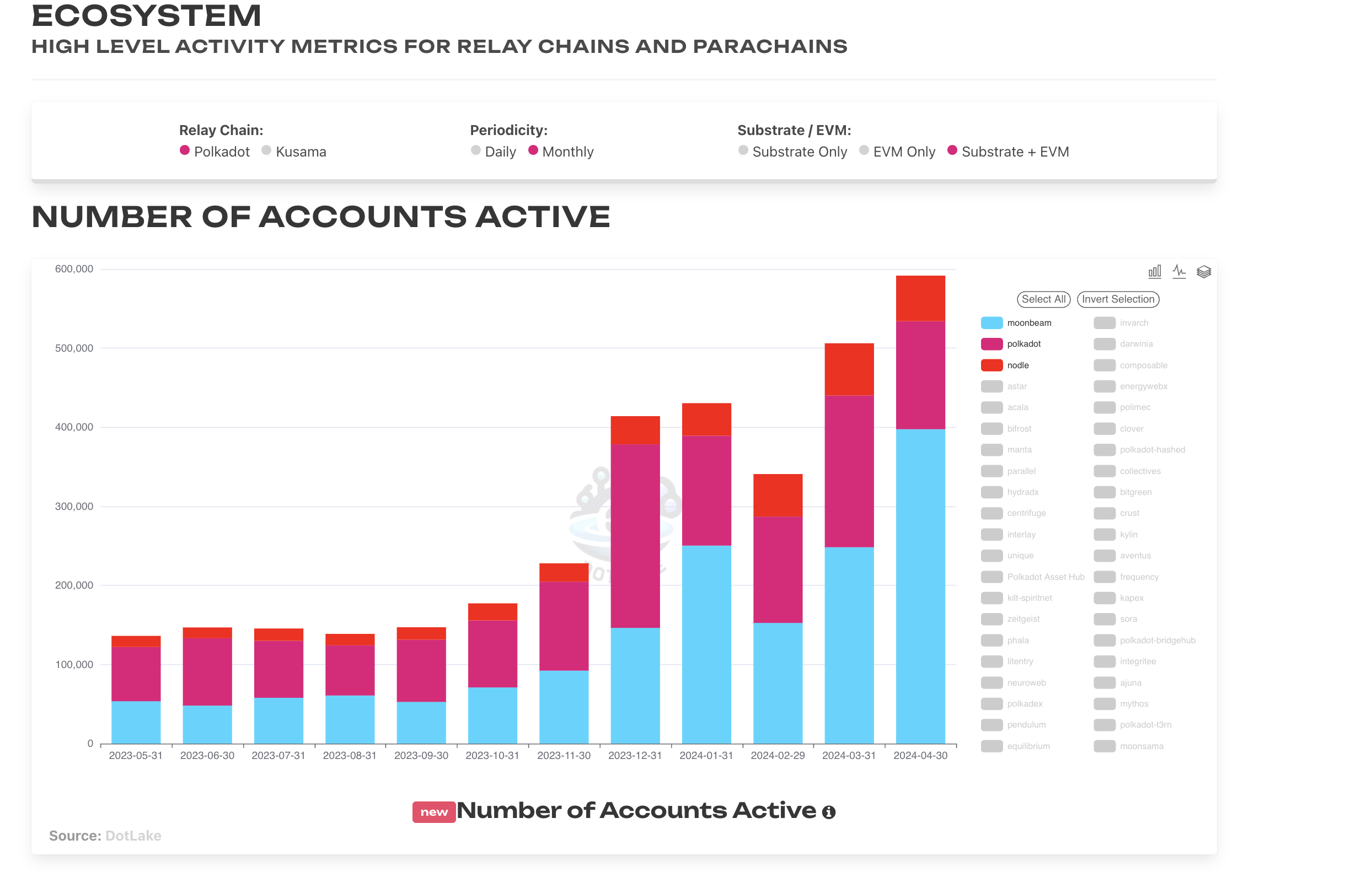
Also, for all graphs on the website, in the top right users can toggle between chart types: choosing bar, line or stacked and a combination of those. See below for an example from the Stablecoins tab.
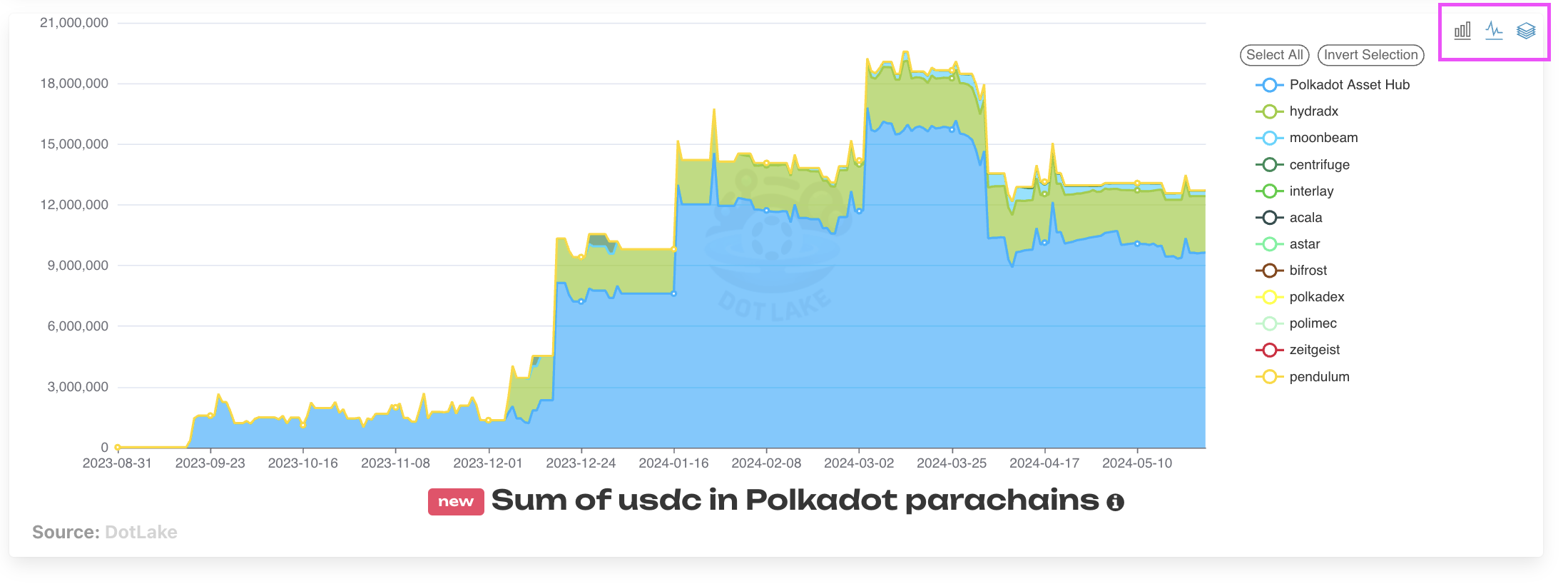
Where the Data Comes From¶
The data displayed on the website comes from DotLake, which is a scalable and cost-efficient data platform built on Google Cloud Platform (GCP) by the Data Team at Parity Technologies. It's designed to store all blocks, events, extrinsics, and more for all the chains in the Polkadot ecosystem. The platform uses a range of existing technologies, keeping the architecture simple with low operational overhead. This includes tools like Terraform, the Substrate Sidecar, Rust & Python programming languages, and various GCP services like Cloud Storage, BigQuery, Cloud Run & Jobs, and Workflows & Functions.
The approach allows the processing of data from block number N to M, storing the raw results as JSON in Google Cloud Storage. This method not only provides a convenient abstraction, but also avoids the pitfalls of custom block parsing strategies in the ever-evolving Substrate Framework. The key to the platform's efficiency is the Block Compressor, which optimizes and reduces the data size significantly, making it more manageable for analytical purposes.
DotLake has evolved from it's origins as a data warehouse built to serve Parity's internal data needs. Since then, the scope has been broadened to share data intitiatives and learnings with the wider community. The plan is to progressively make datasets available to the public, alongside dashboards, metrics, code, and best practices employed to ingest and decode Substrate data.
DotLake currently consists of 80+ Polkadot, Kusama, solo-chains and test-nets with their full history and is continuously expanding.
DotLake Batch Architecture
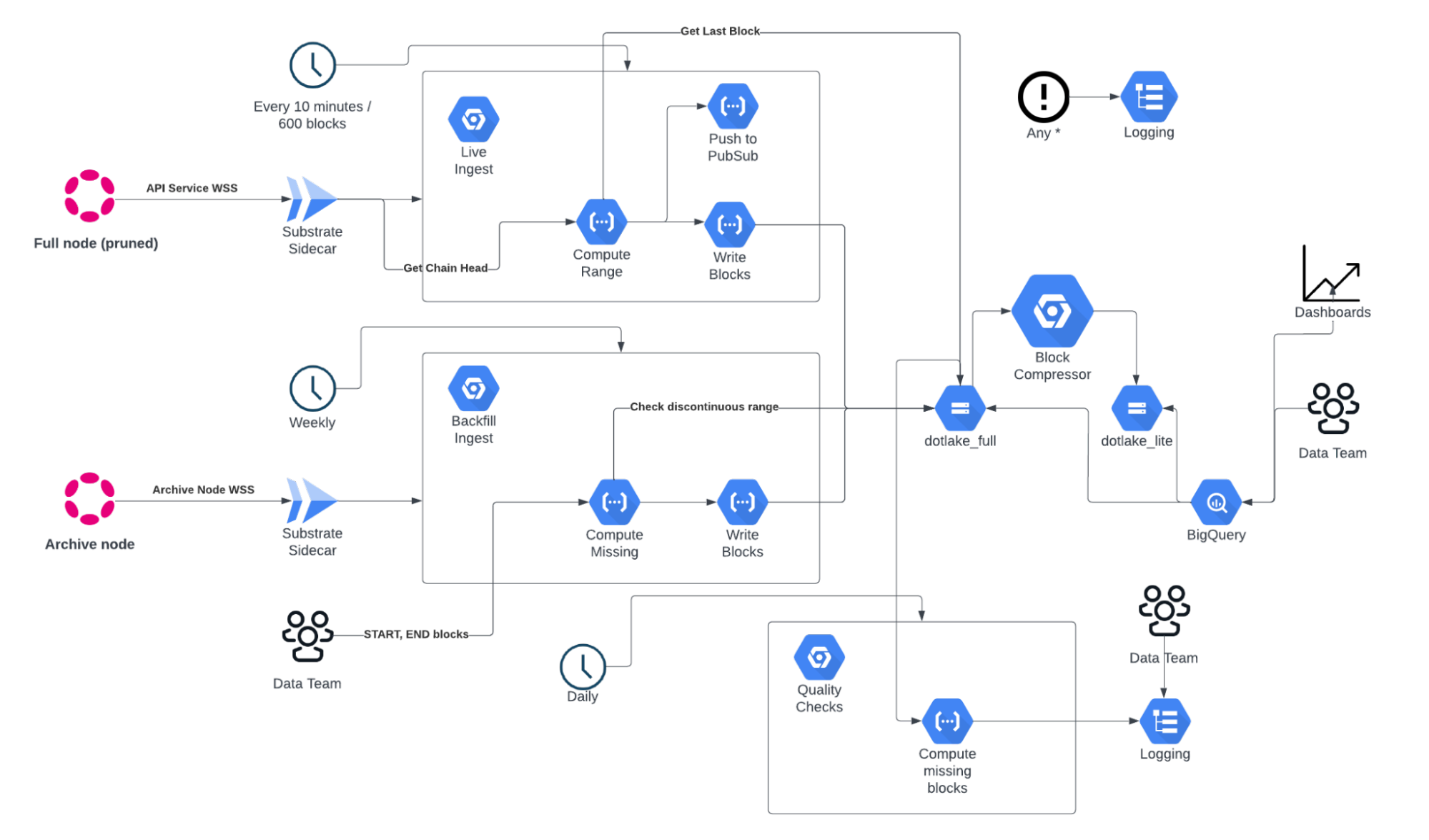
Real-Time Architecture
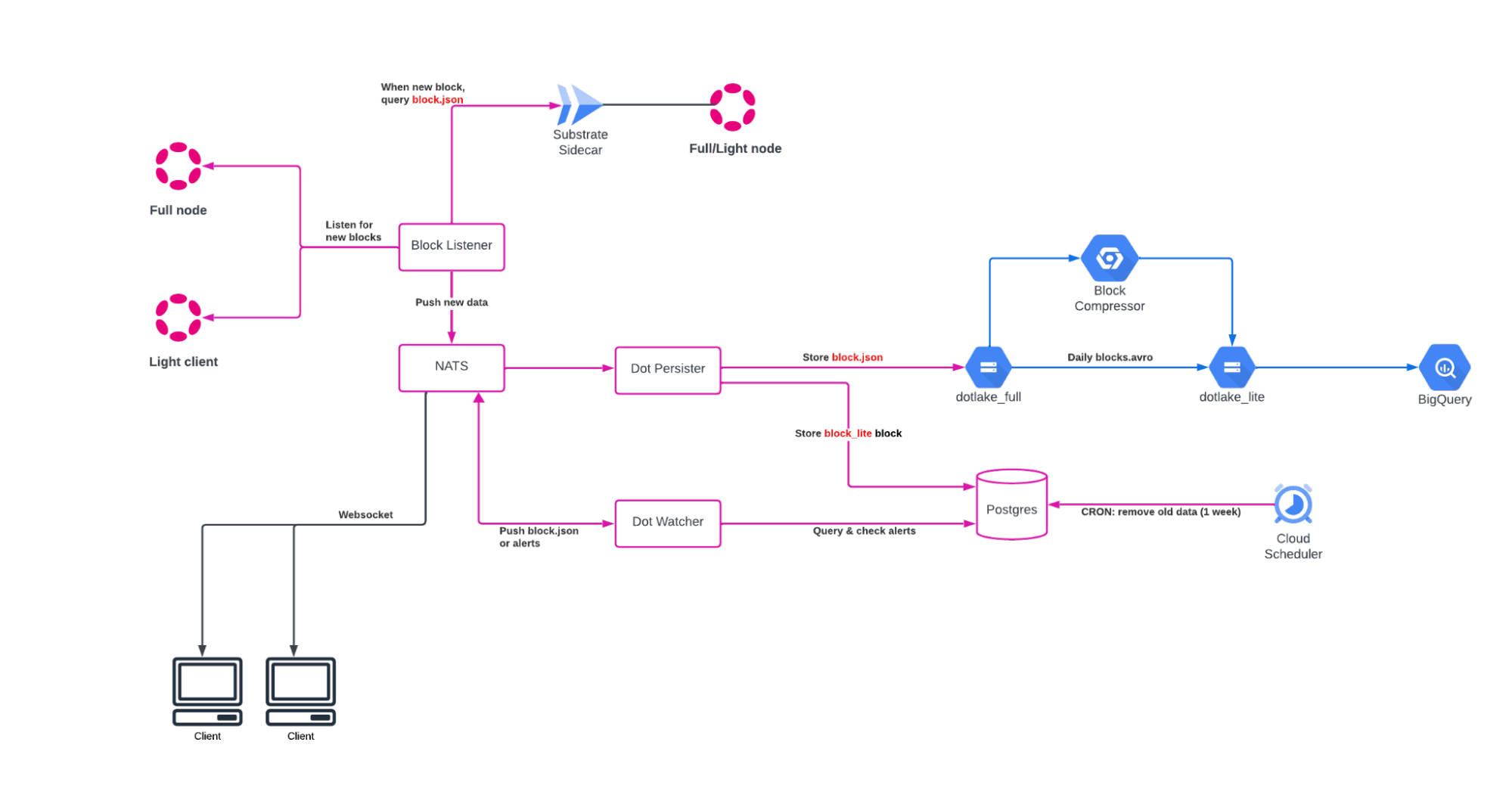
Support: Data Requests, Collaborations, Parachain Onboarding etc.¶
The Parity Data Team is very eager to collaborate with the Ecosystem. If you have any questions, data requests that you need help with, interest in partnerships or you are a Parachain team and want your chain onboarded to the platform - please get in contact with data-team@parity.io.